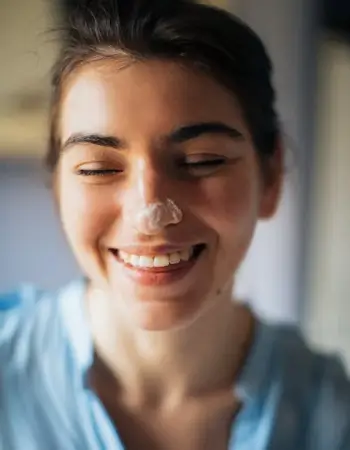Nose fillers have become a popular solution for individuals looking to enhance the appearance of their nose without undergoing surgery.
Also referred to as non-surgical rhinoplasty, this minimally invasive procedure uses dermal fillers to shape, define, and contour the nose. Whether you’re looking to straighten a crooked bridge, refine the tip, or address a wide nose, dermal fillers can provide a tailored solution. But how effective are they? And what can you expect? Let’s dive in.
How long do nose fillers last?
When considering a non-surgical rhinoplasty with fillers, one of the most common questions is, “how long do they last?” The answer depends on several factors, including:
- Type of filler: Fillers made with Hyaluronic Acid (HA) are popular for the nose due to their smooth texture and reversible nature. However, their longevity may vary depending on the brand and formulation.
- Ingredient: Some fillers like Calcium Hydroxylapatite (e.g., Radiesse) or Poly-L-lactic Acid (e.g., Sculptra) tend to last longer than HA-based fillers.
- Method of injection: The technique and expertise of the practitioner can influence how well the filler integrates with the nasal structure.
In general, fillers can last anywhere from 6 to 18 months, but it also depends on the type of injection and procedure performed by the doctor. For more detailed information about filler duration, check out our comprehensive article: how long do fillers last?.
Fillers for nose tip, wide nose, or nose bridge: can they help with that?

Fillers can help adapt the shape of the nose in a subtle and temporary way
Fillers are incredibly versatile and can address a range of nasal concerns along with other issues in other parts of the body or the face. In the case of the nose, those are the most common uses of fillers.
Nose tip
Fillers can help refine and elevate the tip of your nose, giving it a more defined or lifted appearance. This is especially useful for individuals with a drooping or undefined nose tip.
Wide nose
You can also use fillers to correct a wide nose. They can create the illusion of a narrower nose by carefully adding volume to strategic areas. While fillers cannot physically reduce width, they can improve symmetry and proportions, making the nose appear slimmer.
Nose Bridge
Dermal fillers are also commonly used to correct the nose bridge, like a flat or uneven nose bridge. By adding volume, fillers can straighten the profile, smooth out bumps, and create a more harmonious appearance.
For all these scenarios, the results are temporary but highly effective, making them a popular alternative to a traditional surgical nose job.
Most used dermal fillers for the nose
Several dermal filler brands are renowned for their safety and effectiveness in the nose area. Some of the most commonly used products for nose fillers include:
- Restylane Lidocaine: A Hyaluronic Acid filler ideal for structural support.
- Stylage L Lidocaine: Offers smooth integration and comfort during the injection process.
- Aessoa Deep Lidocaine: Provides excellent lift and projection for the nose.
- Revolax Deep Lidocaine: A budget-friendly option with impressive results.
These fillers are designed to meet specific needs, ensuring precise and natural-looking outcomes for patients.
FAQ’s about nasal fillers
Some common FAQs about nose fillers are answered here.
How long will nose fillers last?
As mentioned earlier, the duration of nose fillers depends on various factors like filler type and injection method. Typically, results last between 6 and 18 months. For more details, refer to our article: how long do fillers last.
Is a nose-filling job better than rhinoplasty?
While rhinoplasty offers permanent results, fillers are a less invasive, reversible alternative that requires no downtime. A nose job with fillers is ideal for individuals who want to test changes before committing to surgery or for those looking to correct minor imperfections.
Are fillers good for the nose?
Yes, fillers for the nose are excellent for enhancing nasal aesthetics. They can improve symmetry, straighten a crooked nose, and refine contours without the risks associated with surgery.
Is it safe to put fillers in your nose?
When performed by a certified professional, using FDA-approved products, fillers are safe. However, as with any procedure, there are risks. It’s essential to choose a skilled practitioner to avoid complications. A professional practitioner will minimize the risks plus have will the knowledge to act in case of problems.
Do nose fillers hurt?
Discomfort is minimal, especially with the availability of fillers containing lidocaine, such as Stylage M Lidocaine, Restylane Lidocaine, Aessoa Deep Lidocaine, Belotero Balance Lidocaine, or Revolax Deep Lidocaine. These fillers make the procedure more comfortable for patients.
Disclaimer
This content is intended for professionals only. Dermal fillers should always be administered by certified practitioners or clinics. At TopDermal, we exclusively sell to professionals.
If you’re a professional looking for high-quality dermal fillers in Europe, contact TopDermal to become your trusted B2B partner. With over a decade of experience in the B2B dermal filler market, we provide tailored solutions to meet your business needs.
